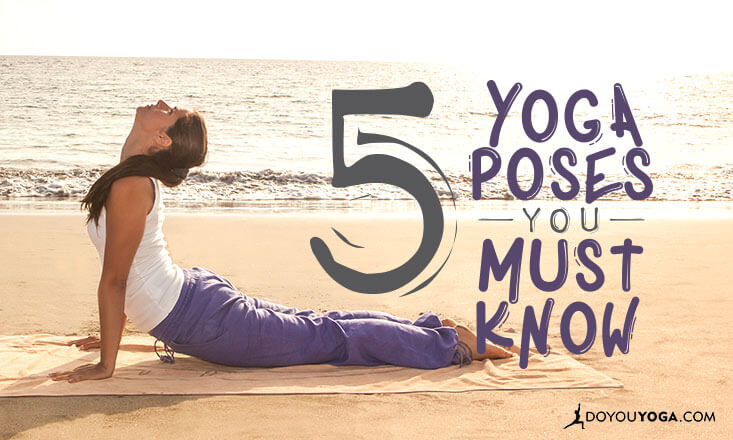Whether you’re new to yoga or a seasoned practitioner, it’s really important to build a solid foundation in your practice.
Nothing in yoga is by accident and many of the foundation poses of yoga are intended to give you a stable base from which to open and strengthen your body, and steadily and safely build your practice towards some of the more challenging poses.
If you want to really create strength, space, alignment and freedom in your body, these are the five poses that you really should take the time to get to know.
1. Down Dog (Adho Mukha Svanasana)
This is probably the most-practiced asana in many yoga classes, so for that reason alone, it’s really worth taking the time to get to know it and to get it right.
Down Dog also comes with a huge list of benefits including strengthening the arms, legs and bones and opening the hamstrings, upper back and shoulders – perfect for preparing the body for more challenging standing asanas, balances and backbends.
Down dog also helps you to learn about your own body, where your tightness and tension lies and where you need to correct imbalances. Focus on activating your arms and opening the chest by drawing the shoulder blades down the back and slightly externally rotating the upper arms.
Press the sit bones and tail bone up and back, keeping the knees as bent as you need to in the beginning to achieve length in the spine.
2. Four-Limbed Staff Pose (Chaturanga Dandasana)
Want to work towards arm balances and inversions? Then this is the pose for you! It is very easy to cheat Chaturanga, but done correctly, this pose will help you build the most incredible amount of strength and stability.
It strengthens the arms, legs and abdominals, builds core stability and healthy shoulders, and is the best preparation for balancing on your arms and hands. Ensure that your core and thighs are engaged, your body is in a straight line, keep your arms at 90 degrees and hug your elbows into your body.
If you find it a real struggle, then drop the knees down first while you build the strength in the arms and core to get you to the full version of the pose.
3. Child’s Pose (Balasana)
This is your go-to pose to rest, restore, rejuvenate and relax. It helps release tension in the back, hips, shoulders and chest, and lengthens and stretches the spine.
It’s a great pose for when Down Dog doesn’t feel an option in your practice, or when you are feeling stressed out or overwhelmed, as this calming pose helps to alleviate stress and anxiety.
There are many variations of Child’s pose, but the main aim is rest and relaxation — so find a position and any support (making fists and resting the forehead on the fists if your head won’t reach the floor) that you need to feel completely relaxed and able to simply breathe and be.
4. Cobra (Bhujangasana)
This is the preparatory pose for moving into deeper backbends, so getting your alignment correct here will open you up (literally!) to a whole world of deeper backbends in the future.
Cobra helps to increase the flexibility of the spine, open the chest, tone the abdomen and open the hip flexors – all essential for backbends. Begin with a low cobra as you start out to ensure that the spine is lengthening and opening, rather than pushing into the hands and hunching the shoulders round the ears.
Keep the legs slightly active, a slight bend in the elbows and feel that the movement is coming from the thoracic area of the spine.
5. Corpse Pose (Savasana)
Savasana is the most challenging yet beneficial asana ever, if you want to ‘master’ any pose this is the one! It is in Savasana that all the changes and benefits that your practice brings integrate into your body, mind and nervous system.
Savasana not only helps to deeply relax the entire body and central nervous system, but also helps slow down the brain waves— bringing with it a deep sense of calm. Keep the legs slightly apart and allow the feet to drop evenly out to either side. Arms are down by the sides slightly away from the body with the palms facing up.
Relax your whole body onto the mat and simply surrender yourself to the present moment, enjoy a few blissful moments and experience total peace.
Focus on getting these poses correct over the next few weeks and watch your practice begin to transform – I’d love to hear your experiences and any other ‘go-to poses’ that have really helped you to evolve your practice. Sound off in the comments below!


